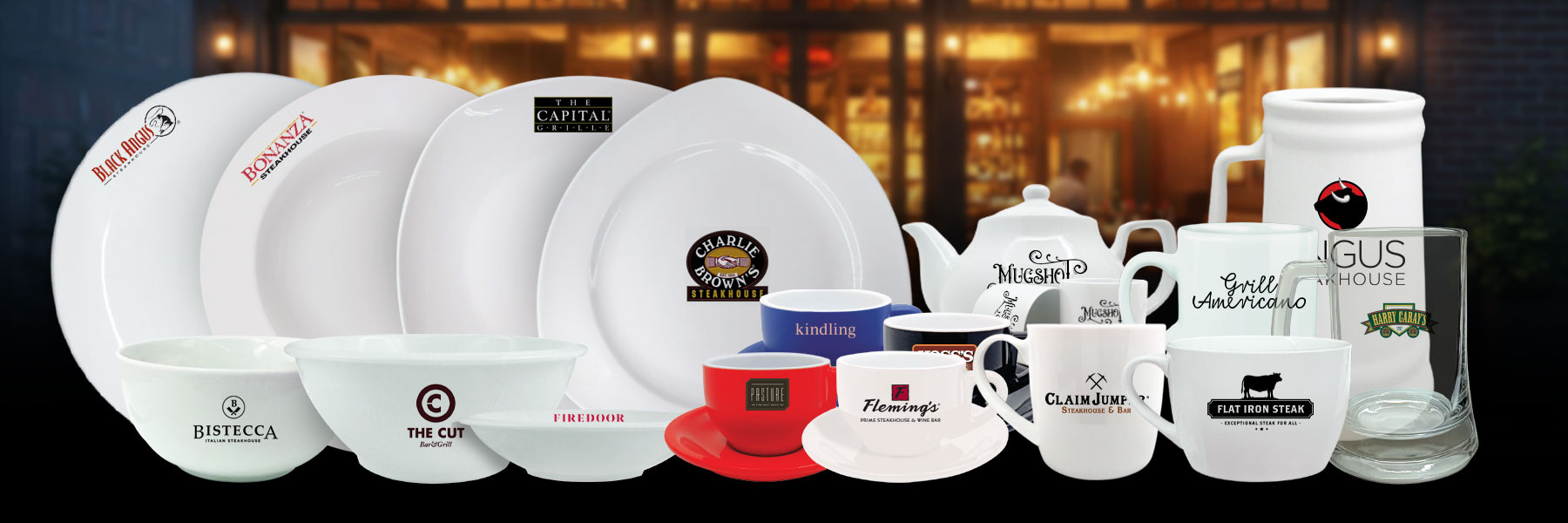
Ceramic Printing On Tablewares
On-Glaze Printing on Ceramic Tableware
On-glaze printing is a widely used decorative technique in the ceramic industry, known for its ability to create vibrant, long-lasting designs on tableware. Unlike surface printing methods used on plastics and other materials, on-glaze ceramic printing involves a more complex process that includes the use of ceramic pigments, water transfer decals, and high-temperature curing. This ensures not only aesthetic appeal but also durability, safety, and resistance to common household conditions like microwaving and dishwashing. Let’s explore how this unique process works and why it’s preferred for premium ceramic tableware.

Printing on Ceramics vs. Plastic: What’s the Difference?
The process of printing on ceramic wares differs significantly from printing on plastic, both in terms of materials used and techniques applied.
Pigments and Inks:
In plastic printing, solvent-based or UV inks are typically used, which dry at room temperature or under UV light. These inks are bright but sit on the surface of the substrate and may fade or peel over time with washing, exposure to heat, or friction.
In contrast, ceramic printing uses ceramic color pigments, which are specially formulated to withstand the high temperatures required during kiln firing. These pigments include oxides and other compounds that retain their color and stability when exposed to intense heat. As a result, the colors on ceramics remain vivid and permanent even after repeated use.

Transfer Technique:
Another major difference is the method of image transfer. Printing on plastic often involves direct printing, where the image is applied straight onto the item using screen printing, pad printing, or digital UV printing.
Ceramic ware, however, typically uses water slide or water transfer decals. These are printed images on special decal paper using ceramic pigment inks. The design is printed in reverse, covered with a protective overcoat, and then soaked in water to release the decal film, which is carefully positioned on the glazed ceramic surface. This technique allows for high-resolution, full-color artwork and intricate designs, which are difficult to achieve with direct printing.
Curing and Firing: Making the Design Permanent
Once the decal is applied to the ceramic surface, the ware undergoes a curing process in a kiln to make the decoration permanent. This firing step is what differentiates on-glaze decoration from surface-level printing on plastic or untreated ceramics.
The Kiln Firing Process:
The kiln heats the ceramic piece to temperatures ranging from 750°C to 850°C (1382°F to 1562°F). At this temperature, the ceramic pigments fuse into the surface of the glaze, embedding the design within the outer layer of the ware. This process is known as on-glaze firing or decal firing.
During firing:
The decal’s organic components burn away.
The pigment bonds with the glaze.
The design becomes a permanent part of the tableware.
This step ensures that the decoration won’t wash off, peel, or degrade over time, even under harsh conditions.
Safety and Durability: Why On-Glaze is Ideal for Everyday Use
One of the major benefits of on-glaze ceramic printing is its compatibility with modern lifestyles. Tableware produced using this method is:
✅ Food Safe
All pigments and overglaze materials used in reputable ceramic production are tested and certified to be lead-free and cadmium-safe, in compliance with FDA, EU, and LFGB standards. Since the pigments are encapsulated within the glaze after firing, there is no risk of leaching into food or drink.
✅ Microwave Safe
Because the design becomes part of the ceramic surface and contains no metallic components, it can safely be used in microwave ovens without risk of arcing, sparking, or pigment damage. The durability of the glaze and design ensures that repeated heating will not degrade the artwork.
✅ Dishwasher Safe
Unlike surface-printed plastic items, which may fade or flake over time, kiln-fired ceramic tableware retains its design integrity even after hundreds of dishwashing cycles. The high-temperature curing process makes the surface scratch-resistant and detergent-resistant, maintaining its beauty and hygiene with minimal care.
Summary: Why Choose On-Glaze Printed Ceramic Tableware?
On-glaze printing is the gold standard for durable, visually stunning ceramic decoration. Unlike plastic or surface-printed items, the use of ceramic-safe pigments, water transfer decals, and high-temperature kiln firing ensures the design not only looks professional and elegant but also stands the test of time.
Whether for home use, hospitality, or promotional branding, on-glaze ceramic wares are:
Highly customizable with detailed and colorful artwork
Extremely durable under heat, water, and frequent use
Certified food-safe and compliant with international safety regulations
Microwave- and dishwasher-friendly, offering both beauty and practicality
If you’re looking for tableware that blends art with everyday function, on-glaze printing on ceramics is the perfect choice.
